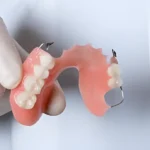When it comes to romantic relationships, it’s not uncommon to hear people say that they have a fear of intimacy or that they struggle with getting close to others. In some cases, this fear of intimacy may be linked to an avoidant attachment style. Individuals with an avoidant attachment style may find it challenging to form close, intimate connections with others. This style of attachment can be challenging, but it’s possible to learn how to heal avoidant attachment style and create more secure, fulfilling relationships. In this article, we’ll explore what an avoidant attachment style is, how it develops, and what steps you can take to rewrite your attachment story and create healthier relationships. For more information, contact an Ontario therapist.
What is an avoidant attachment style?
Attachment theory is a psychological framework that explains how the bonds we form with others during infancy and childhood shape our ability to form and maintain relationships throughout our lives. Attachment styles are typically categorized into three main types: secure, anxious, and avoidant. Individuals with an avoidant attachment style may struggle with getting close to others and may feel uncomfortable with emotional closeness. They may appear distant or aloof, and they may prioritize independence and self-sufficiency over emotional connection. Check out this guide on avoidant attachment triggers.
How does an avoidant attachment style develop?
An avoidant attachment style often develops as a result of early childhood experiences. During infancy and childhood, children rely on their primary caregiver to provide safety, comfort, and emotional support. If a child’s primary caregiver is consistently unresponsive, emotionally unavailable, or neglectful, the child may develop an avoidant attachment style as a coping mechanism.
In an attempt to meet their emotional needs, children may learn to suppress their feelings and become self-reliant. They may feel that expressing their emotions leads to disappointment and frustration, and as a result, they may learn to avoid emotional connection altogether. Alternatively, if a child is punished for expressing their emotions, they may learn to associate vulnerability with negative outcomes and avoid emotional connection.
As the child grows up, they may carry these avoidant attachment patterns into their adult relationships. They may struggle with getting close to others, feel uncomfortable with emotional intimacy, and prioritize independence and self-sufficiency over emotional connection. This can lead to challenges in forming and maintaining close relationships, feelings of loneliness and isolation, and dissatisfaction in relationships.
However, it’s important to remember that an avoidant attachment style is not a life sentence. With the right support and tools, it’s possible to heal from past wounds and create healthier relationships. By recognizing the root cause of your avoidant attachment style, challenging negative beliefs, and practicing vulnerability, you can create more secure attachments and experience the joy of deeper connections with others.
Why is it essential to rewrite your attachment story?
Rewriting your attachment story is essential because it allows you to break free from old patterns of behavior and create more secure, fulfilling relationships. When you have an avoidant attachment style, it can be challenging to form close, intimate connections with others, which can lead to feelings of loneliness, isolation, and dissatisfaction in relationships.
By rewriting your attachment story, you can heal from past wounds and create healthier relationships in the future. When you understand the root cause of your avoidant attachment style, you can begin to challenge negative beliefs and develop healthy coping strategies. This can lead to a greater sense of emotional connection, intimacy, and fulfillment in your relationships.
Furthermore, rewriting your attachment story can lead to personal growth and self-discovery. When you learn to recognize your attachment style and how it affects your relationships, you can develop a greater sense of self-awareness and empathy towards others. This can lead to greater personal satisfaction and a deeper understanding of yourself and those around you.
Steps to rewrite your attachment story:
Recognize your attachment style: The first step to rewriting your attachment story is to recognize your current attachment style. Take some time to reflect on your past and present relationships and consider how you typically respond to emotional closeness and vulnerability.
Identify the root cause: Understanding the root cause of your avoidant attachment style can help you begin to heal. Consider your childhood experiences and any significant life events that may have contributed to your current attachment style.
Challenge negative beliefs: Individuals with an avoidant attachment style may hold negative beliefs about emotional connection, such as “vulnerability is weakness” or “I don’t need anyone.” Identify any negative beliefs you hold and challenge them with more positive, realistic thoughts.
Practice vulnerability: Developing emotional intimacy with others can be challenging for individuals with an avoidant attachment style, but it’s essential to healing and creating healthier relationships. Start by practicing vulnerability in small ways, such as sharing your feelings with a trusted friend or partner. Progress towards demonstrating assertive anger when angry.
Seek professional help: Rewriting your attachment story can be a challenging process, and it may be helpful to seek professional support. A therapist can help you identify and address underlying issues, develop healthy coping strategies, and create more secure attachments.
Conclusion
Healing from an avoidant attachment style is a process, but it’s possible to create more secure, fulfilling relationships by rewriting your attachment story. By recognizing your current attachment style, identifying the root cause, challenging negative beliefs, practicing vulnerability, and seeking professional help, you can create healthier relationships and break free from old patterns







